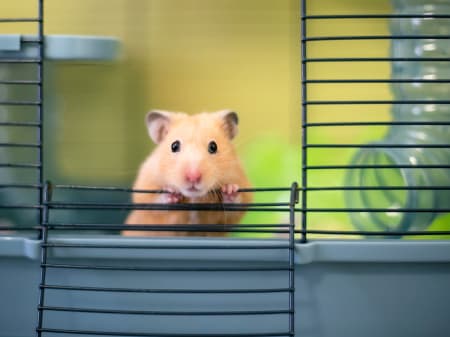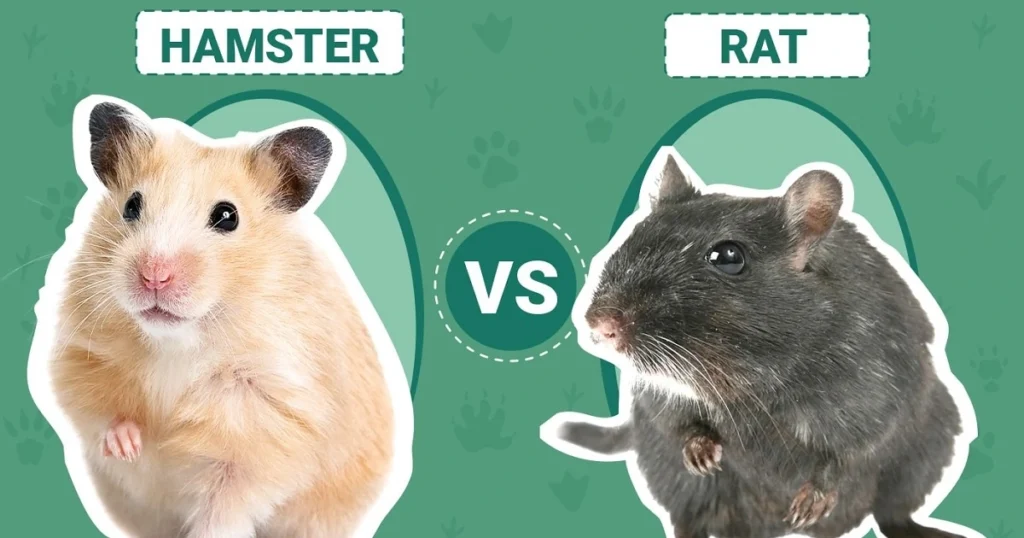Differences in Behavior by Hamster Type
Understanding Hamster Species
When it comes to hamster types, various species exhibit distinct behaviors based on their natural habitats and social structures. The common hamster breeds found in households include the Syrian, Campbell’s dwarf, Russian dwarf, and Roborovski. Each species has unique traits that impact their interactions, activity levels, and preferences. Understanding these differences is vital for any hamster owner looking to provide the best care and environment for their pets.

Syrian Hamsters
Syrian hamsters, also known as golden hamsters, are the largest and most popular breed among pet owners. They are primarily solitary creatures by nature, which means they prefer to live alone to avoid territorial disputes. This can affect their behavior significantly. For instance, *Syrian hamsters* may exhibit more exploratory behavior when compared to dwarf breeds. They require spacious cages with plenty of enrichment to engage their natural curiosity. Their playful nature also encourages owners to provide tunnels, wheels, and hideouts, promoting healthier behavioral patterns.
Dwarf Hamsters
Unlike their larger counterparts, dwarf hamsters are often more sociable. *Campbell’s dwarf* and *Russian dwarf hamsters*, for instance, can live in pairs or small groups if introduced correctly. Their behavior tends to be more dynamic and interactive. These hamsters enjoy engaging with each other and exhibit playful social behaviors, such as grooming and burrowing together. Markedly, they are busier and more active, making it essential to provide an environment that allows them to socialize and express their natural instincts.
Behavioral Characteristics Across Breeds
Each hamster breed exhibits unique behavioral characteristics that stem from their lineage and the environment. This section examines how these differences manifest in daily life, particularly in interactions with both their immediate environments and their owners.
Activity Patterns and Exploration
Hamsters are crepuscular, meaning they are most active during dawn and dusk. However, the degree of activity can vary substantially between breeds. Syrian hamsters commonly exhibit bursts of high energy during the evening, often engaging in extensive explorations of their cages. Alternatively, dwarf hamsters, given their more sociable nature, have been known to engage in group activities, especially during playtime with companions. Creating a stimulating environment with ample hiding spots and climbing structures can cater to these preferences.
Territorial Behavior
Territoriality is a crucial aspect of hamster behavior, particularly among species like Syrian hamsters. When placed with another hamster, they may exhibit aggressive behavior as they defend their territory. On the contrary, dwarf hamsters can live harmoniously in pairs or groups if introduced properly and slowly. Understanding these nuances makes it easier for owners to prevent potential conflicts or stress among their pets. Incorporating separate play areas, especially for solitary species, minimizes territorial disputes and fosters a safer environment.
Socialization and Handling
Social behaviors vary widely between hamster species, influencing how they interact with humans as well as their caregivers. Owners should approach each type of hamster with an understanding of its specific social needs and handling preferences.
Syrian Hamster Handling
When handling Syrian hamsters, patience is critical. These hamsters, if not socialized from a young age, may be timid and skittish around humans. For the best results, it’s recommended to allow them time to adjust to their surroundings before extensive handling. Regular interaction in a calm and predictable manner encourages them to trust their owner, ultimately leading to gentler handling behavior over time.
Dwarf Hamster Social Interaction
Dwarf hamsters enjoy interactive play and can be more accepting of handling compared to their larger relatives. *Roborovski hamsters*, for instance, are extremely energetic and may need more frequent socialization. Owners should engage with them gently, providing opportunities for free play outside of their cages while carefully monitoring their energy levels. Establishing a bond with dwarf hamsters is often more straightforward, facilitating a more enriching experience for both the pet and owner.
Environment Adaptation
To thrive, hamsters need environments that suit their breed-specific behavior. Understanding how different types of hamsters adapt to their habitats can significantly enhance their well-being.
Building a Suitable Habitat
Creating a habitat that caters to your hamster’s natural behavior is essential. Syrian hamsters benefit from larger cages with extensive space for exercises, such as running wheels, tunnels, and climbing areas. For dwarf hamsters, smaller, well-equipped houses with hideouts are sufficient, given their social nature. Consider using a substrate that allows for burrowing, as both species enjoy tunneling. Selecting appropriate materials is critical for their happiness and comfort.
Common Environmental Stressors
Hamsters can experience stress from various environmental factors, such as loud noises, excessive handling, or the presence of other pets. It’s crucial to monitor their surroundings by minimizing disturbances and providing secure, calm living spaces. Additionally, paying attention to their body language—like hiding, excessive scratching, or aggressive behavior—can help identify stressors and eliminate them from their environment.
Conclusion
Understanding the behavioral differences across various hamster breeds allows pet owners to provide personalized care tailored to each type’s unique needs. This knowledge enhances not only the wellbeing of the pet but also the bond between hamster and owner. By fostering positive interactions, creating appropriate environments, and encouraging natural behaviors, owners can significantly improve their hamsters’ quality of life. Now let’s dive into some frequently asked questions that further clarify these insights.
FAQ
1. What are the primary differences in social behavior among hamster types?
Social behavior significantly differs by hamster type, notably between solitary Syrian hamsters and more social dwarf hamsters. Syrian hamsters prefer to be alone, while Campbell’s and Russian dwarf hamsters can and often do live in pairs. If you’re considering multiple hamsters, it’s essential to choose species known for their sociability and follow proper introduction techniques.
2. How do I reduce stress in my hamster?
To minimize stress in hamsters, create a quiet, secure environment where they can retreat when needed. Avoid excessive handling, especially right after bringing your hamster home. Providing hiding spots and engaging toys can also help them feel safe and secure, fostering better behavioral health.
3. What enrichment activities can I provide for different hamster types?
Enrichment activities vary depending on the hamster type. For Syrian hamsters, engaging in maze setups and climbing opportunities stimulate their curiosity. Dwarf hamsters additionally benefit from interactive toys that encourage social play, such as tunnels and rotating wheels that enable them to interact with companions. Always ensure that activities suit the size of your hamster, keeping safety in mind.
4. Can hamsters share a cage without fighting?
Not all hamsters can share a cage successfully. While dwarf hamsters are known for their sociable behaviors, they can live together under specific conditions. Always introduce new hamsters gradually and monitor their interactions closely. Syrian hamsters should never be housed together due to their territorial nature, as conflicts are likely to arise.
5. Which hamster type is best for a first-time owner?
For first-time owners, the Syrian hamster is often recommended due to its relatively calm nature and cultural significance in pet ownership. They adapt well to interactions and allow simpler care requirements compared to some dwarf hamsters, making them easier for beginners to manage effectively.
6. What should I look for when choosing a hamster?
When selecting a hamster, consider factors like breed characteristics, age, and health. Look for active behaviors and clear, bright eyes. Avoid hamsters that seem lethargic or unapproachable, as these behaviors may indicate health issues or significant stress levels.
7. How can I encourage bonding with my hamster?
Bonding with your hamster starts with patience and regular, gentle interaction. Use treats to retrieve trust, and spend time quietly near their enclosure, allowing them to approach you. The key is to always respect their comfort levels, leading to a stronger bond over time.
